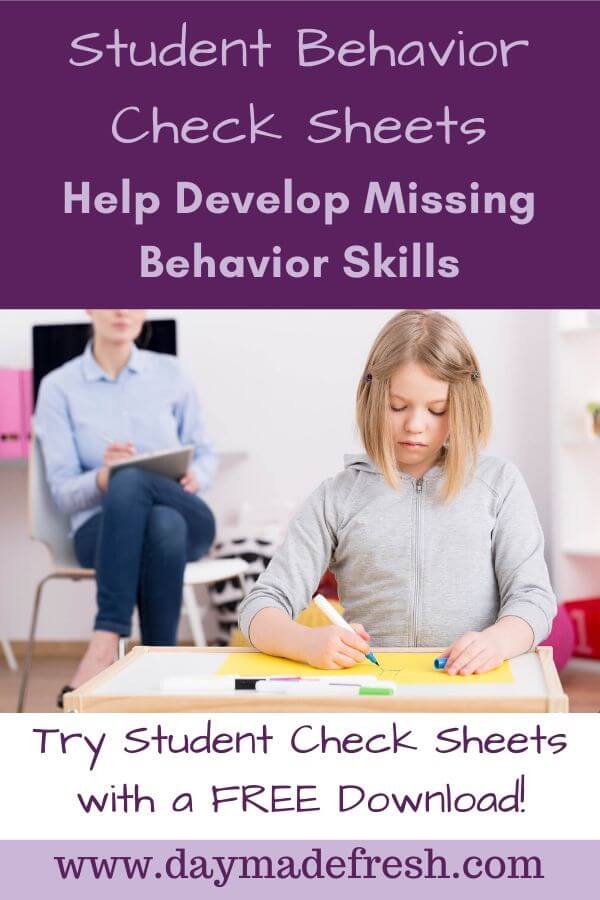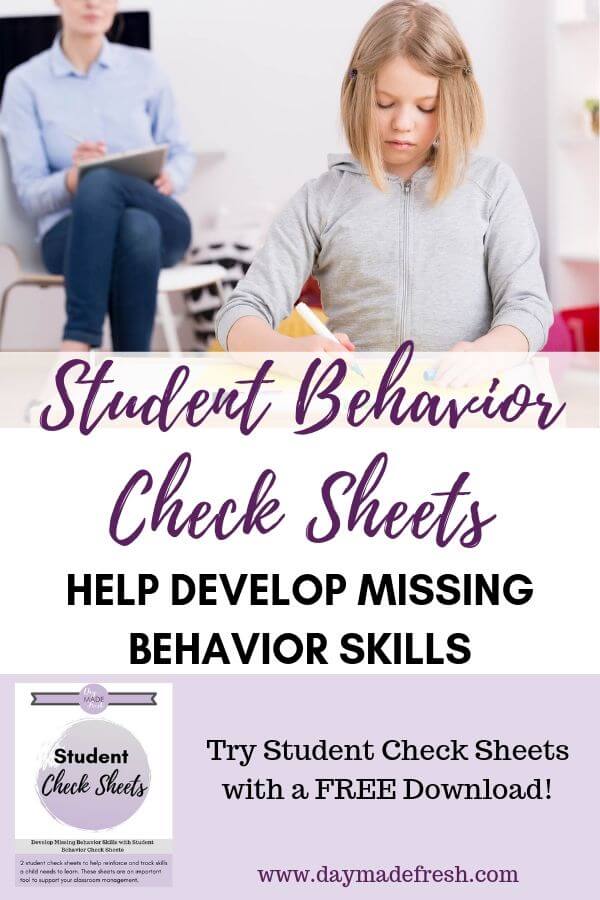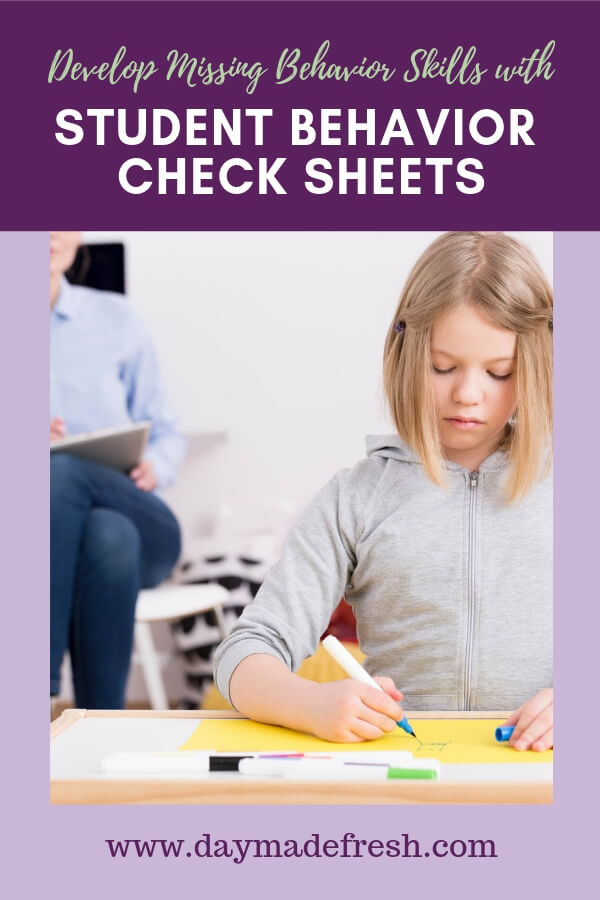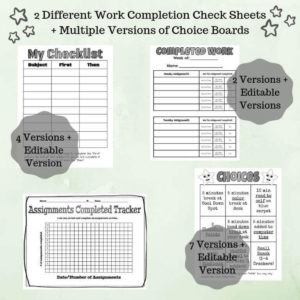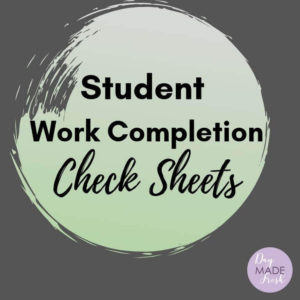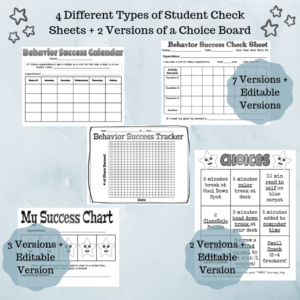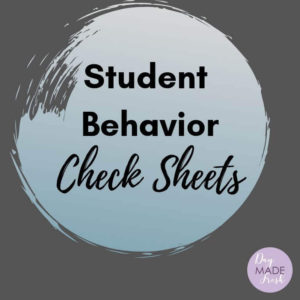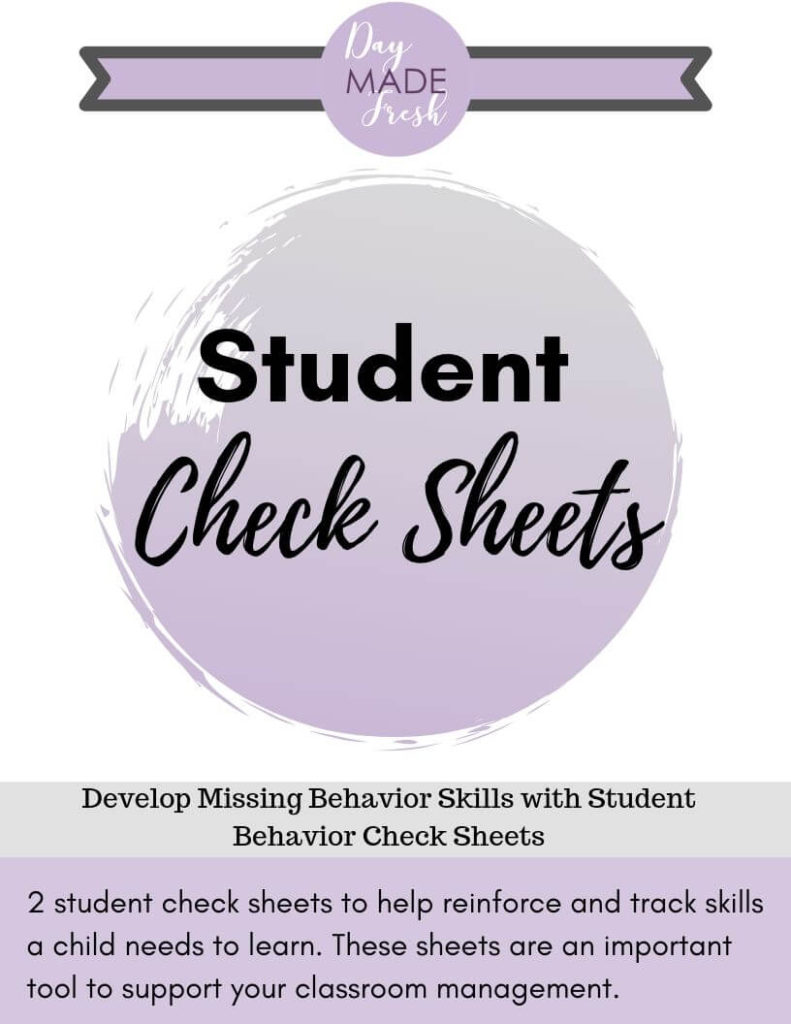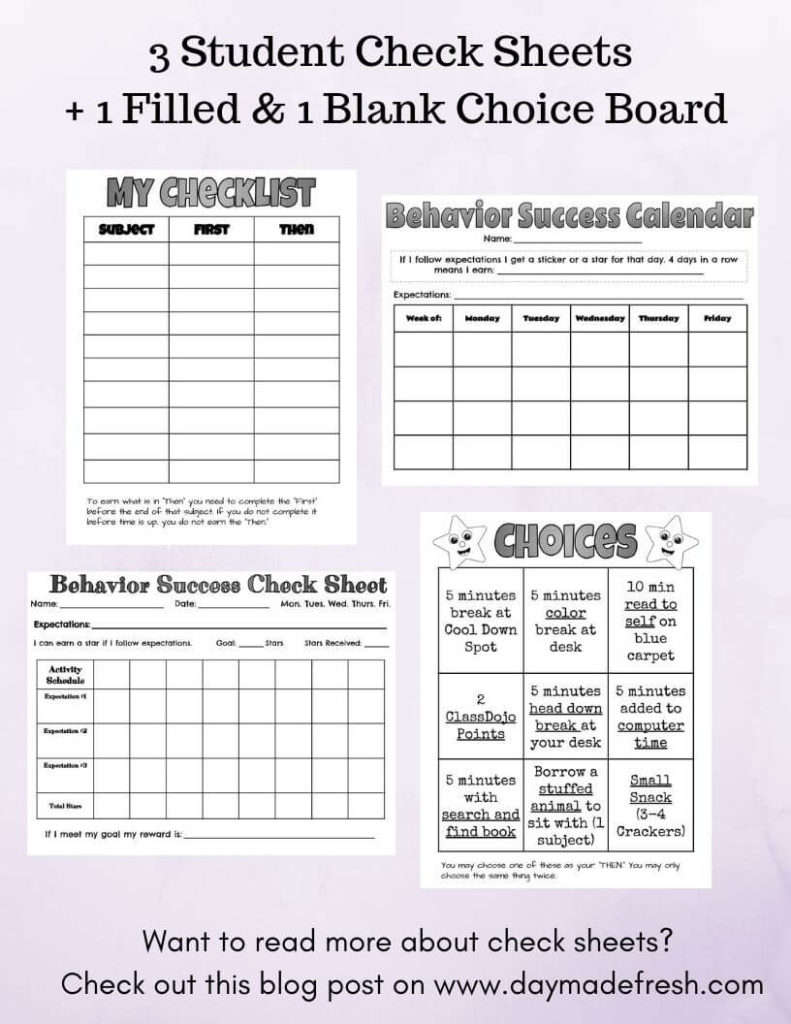As you’re taking morning attendance you notice one of your students is absent. You release a sigh of relief because you know that your day is going to be easier. We want all students to learn but challenging students can make that harder for us to accomplish.
A student with challenging behaviors impacts not only his or her own ability to learn and grow. Their behavior also impacts the learning of other students.
Do you struggle with how to handle students like this? Have you implemented consequences to no avail? Are there days when you are ready to give up and write the student off as a lost cause?
I came to the same crossroads with a student. When I asked a colleague for help she asked me a question that helped me change my thinking.
“Would you punish a student if they did not know how to add or subtract OR would you teach them how to add or subtract?”
Her point was that kids don’t want to be the challenging student in the class. If they could they would be good. So instead of giving consequences, we need to help fill in the behavior skills they’re missing. One way to do that is through student behavior check sheets.
Student Behavior Check Sheets Help Reinforce Skills

A student behavior check sheet or behavior chart is a tool any teacher or parent can create and use with a child. It helps reinforce skills the child needs to learn. The check sheet encourages the child to focus on the skill they are learning. It also has built-in positive reinforcement and a way to track the child’s growth with the skill.
Behavior check sheets are an important tool in your classroom management toolbox. An effective check sheet fits your student’s needs, focuses on the positive, and is easy to put in place.
Ready to try Student Behavior Check Sheets with your students? Click here to get some FREE check sheets!
This post contains some affiliate links for your convenience. Click here to read my full disclosure policy.
Start with Skills
When developing a behavior chart or check sheet you first decide on 1-2 skills you want to focus on with the student. List the skills the student is lacking and needs to learn then narrow it down to 1 or 2 skills. This step is important because it will help you determine what kind of check sheet you need. The skills you’re focusing on will help guide how you will reinforce the skill. (Want to read more about this philosophy check out the book: Lost at School by Ross W. Greene Ph.D. )
Do you have students that struggle to complete work in the time given? You can try using a “First-Then Checklist” with these students. Write the assignment under the “First” heading. Then the student chooses their reward/break and writes it under the “Then” heading. The child earns their choice if they complete the assignment during the time given. This helps them learn the skill of getting work done first and then taking a break.
Try out the “First-Then Checklist” here OR click on one of the images below to purchase the Student Work Completion Check Sheets set at Teachers Pay Teachers.
I don’t want to purchase at this time. But, I would like a FREE sample of Student Check Sheets!
If a student struggles to keep her hands to herself and gets in fights a “Calendar Behavior Chart” may work. This is effective if the child has lost a privilege like recess. When the student makes it a set period of time keeping her hands, feet, and objects to herself she earns a sticker. Then when she earns five stickers in a row she earns a day back of her recess. A chart like this helps the student understand what behavior is appropriate. It also teachers that demonstrating appropriate behavior earns privileges.
You can try the “Calendar Behavior Chart” by downloading a free set of check sheets OR purchase the Student Behavior Check Sheets at Teachers Pay Teachers.
The skill the child needs to learn determines the type of behavior check sheet you use. One behavior chart will not work for all students. It may take a few tries and a couple of edits to find a check sheet that will work. A good fit check sheet or chart will help the student become more successful with their behavior.
Get the Student Involved
It doesn’t matter if your behavior check sheet has cute clip art and fun fonts if the student will not use it. So how do you get a kid to engage with and use a check sheet? You get them involved in making the check sheet.
Let the student choose the font or the type of sticker or symbol they will earn. If the student will be earning a reward or break let them choose from a list of ideas or even brainstorm their own. As the teacher, you still do the main design and make the final decisions.
It’s amazing how just giving students a little bit of ownership of a check sheet gets them on board. The student will be proud of their chart or checklist because they helped create it.
Looking for behavior check sheets you can customize to your student? Get ready to print AND editable check sheets in my Teachers Pay Teacher Store. Click on either image below:
I don’t want to purchase at this time. But, I would like a FREE sample of Student Check Sheets!
Another way to get a student engaged in the process is to ask them if they were successful in meeting their check sheet goal. This puts the ownership of their choices on them. It also allows them to reflect on their choices. Some may need guidance in the beginning, but most get good at evaluating their own choices. Reflecting on their own choices is such a valuable skill for students to learn. So in the future, they can continue to be successful when they don’t have your guidance.
Components to Include in A Student Behavior Check Sheet
1. I can statement
One of the most important components to include in any behavior chart or check sheet is a description of what you expect of the student. Write their goal or expectation as an “I can” statement and write it in a positive way.
“I can complete my work on time.” vs. “I have no incomplete work.”
“I can raise my hand to ask a question or share an answer or comment.” vs. “No blurting.”
“I can use kind words.” vs. “No swearing or name-calling.”
The “I can” statement gives students a clear understanding of what you expect from them. It also gives them ownership of their own behavior choices.
2. Schedule
It is also helpful to include a schedule or order of activities on the check sheet. This isn’t necessary for all students, but it can be essential for students that need a predictable structure to their day. It helps students see how the day will progress and how much time they have until the next activity.
Using a schedule to organize a behavior chart will allow you to track specific times when a student is doing well and when they tend to struggle more. Identifying behavior patterns will allow you to implement ways to counteract when a student is more likely to struggle.
3. Positive Consequences (Rewards)
It is beneficial to lay out what the student will earn if they demonstrate the looked-for behavior. This eliminates arguing or bargaining and helps motivate the student throughout the day.
I caution you to keep any rewards small. If the student is earning a break it should be less than 5 minutes. Rewards for a check sheet should be smaller than rewards earned by students that are following classroom rules.
For example, in my class, if students earn 100 ClassDojo points in a month they can choose from a menu of rewards. One of these rewards is to bring a stuffed animal from home to school for the day. My students on a check sheet can earn a stuffed animal on their desk for one subject period.
I set up my classroom management plan this way to have balanced rewards. In the past, students that were successful day to day earned fewer rewards than students that needed behavior support. This wasn’t a good balance. It caused students to either ask for a behavior check sheet or act out to “earn” a behavior check sheet. These students felt “punished” for demonstrating appropriate behavior. Once I switched to more balanced rewards I found these issues disappeared.
Student Behavior Check Sheet Helpful Tips
1. Keep It Simple
Do not get carried away with behavior check sheets. These should help your classroom run more smoothly not make a ton of extra work for you. The goal is to create a streamlined system that is easy to manage. In the beginning, check-in frequently with a student. As they start to be successful with the plan you should extend the amount of time between check-ins. Have set times to check in when the rest of the class can be working independently.
Another way to keep your system simple is to make the check sheets easy to use each day. Have a stack of check sheets printed, so they’re ready to use each day. If possible prep them the day before so they’re waiting for the student to start their morning off right. You can also save paper by slipping the check sheet into a clear sheet. One downside of using a clear sheet is you don’t have a paper copy to use as data.
Ready to Try out student check sheets with your students. Get a free download of Student Check Sheets and access to other great resources. Click here now!
2. Don’t Use Smiley Faces
When I first started using behavior check sheets I used one given to me by our special education teacher. The student earned a smiley face, straight face, or frowny face based on their behavior during each part of the day. When the student was earning smiley faces everything was great. When the student earned a frowny face I’m sure you can all guess how that went over. The check sheet meant to help the child with their behavior caused new challenging behaviors.
A challenging student often struggles with perceived criticism or dislike. They will see earning a frowny face as criticism or the teacher disliking them. Instead only mark if the child meets the goal set on the check sheet. If they do not meet the goal leave it blank. This tends to lessen outbursts and makes the chart more objective versus subjective. Using the I can statement ask the student, “Did you meet your goal?” The answer is either yes or no. If there is some gray area discuss it with the child before making a decision.
3. Pre-Teach Expectations
Taking the time to teach a student the new expected behavior is vital to the success of the plan. It is also important to teach the student how the check sheet works.
One way to pre-teach expectations is to role play with the student. Role-playing helps the student see the check sheet or chart in action. It also shows the student what to expect and help them work on the new behavior skill.
If the child throws things when upset, model being upset and using a calming technique. Show the student how when you are angry you belly breath or pretend to blow out candles on your fingers instead of throwing things. Then demonstrate how using these techniques earns a sticker on the behavior check sheet.
Also, pre-teach the rest of the class that each student will get what they need to be successful. This means that some students may get different things or be on different plans.
It can be helpful to talk about fair does not mean equal. I use eyeglasses as an example. I ask students, “Is it fair if I have glasses to see, but George doesn’t have glasses because he can see without them?” Students quickly pick up that everyone needs different things to be successful.
4. Give Yourself Grace
If a check sheet doesn’t work with a student remember to give yourself, the child, and the check sheet time to adjust. Give it at least five days in a row before changing things up. It may take some time for everyone to adjust to the new plan.
You won’t know what works until you actually put it in to practice. If it is still not working after five days make some alterations or try a new check sheet or plan. Check with the student to get their input on what is working and what could change. It is worth the time and energy to find the system that works best for you and the student.
One year I went through at least four different versions of a plan with two students. Both were using a similar check sheet, but with different goals. When we found the right system it changed our classroom environment. The two students felt successful and we had a much calmer learning environment. I dealt with fewer behavior interruptions during class, so the rest of the class was better able to learn.
One of the students asked me the first-day things were going well, “Am I having a good day today?” It was a new experience for this student. They couldn’t believe that they had made it a whole day without any behavior problems. This child went on to have many more “good days.” It started with focusing on one skill at a time and acknowledging success on a behavior check sheet. If I had given up when the first version of the plan didn’t work we never would have made it to that point.
If you’re tired of dealing with challenging students in your classroom, take action. Develop a plan for helping those students learn the behavior skills they are lacking.
- Focus in on 1-2 skills or behaviors.
- Find a behavior chart or check sheet that will reinforce those behaviors.
- Get the student involved to create a system that will work for all.
- Keep it simple (No smiley faces)
- Pre-teach expectations so students know what to expect.
- Give yourself grace, it may take a few adjustments to find the best fit.
It’s up to you to start the process if you want to see something change. If you wait for the student to change on his or her own you will be waiting a long time. What type of check sheet system are you planning on putting in place with your student(s)? Want to save this article to refer back to later? Save it on Pinterest!
Related Post: Are You Tired of Dealing with Challenging Student Behaviors?
Related Post: A Strong Classroom Management Plan, Is Worth It!
